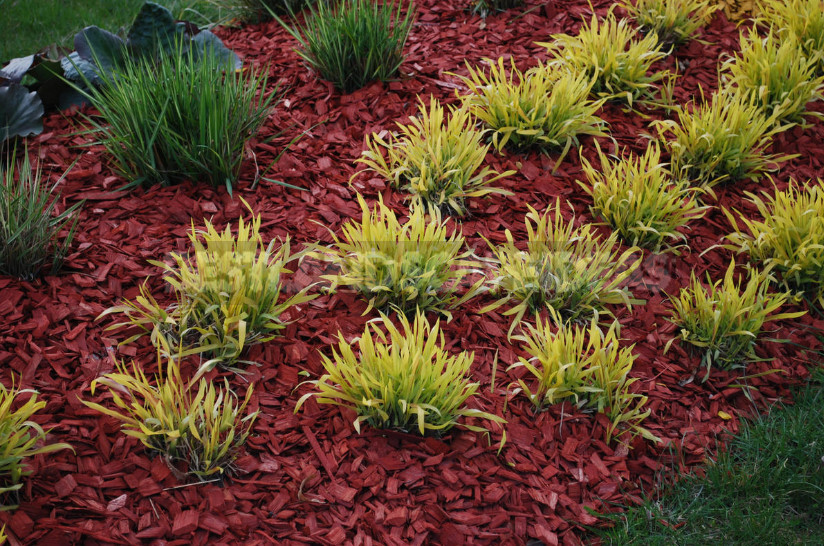
Many years ago, when I was just starting to process my dacha, all my efforts were aimed at bringing there “order” — the beds were licked, there was not a single blade of grass around. But later, fully feeling the delights of bare soil, which refused to develop normally cultivated plants, decided to change course and bring to the country “mess” — mulch beds and close the aisles. This approach not only helped me to restore the fertility of the soil and achieve a generous harvest, but also freed up a lot of free time – to care for planting has become much easier.
Even at the stage of “intelligence” I found out that people use a variety of materials for mulching beds, and today I decided to collect all these ideas in one article – especially for the same suburban “dummies”, as I was before. I want to focus on organic mulch. Such materials are often at each of us at hand and do not require additional financial expenditure, as well as after rotting improve the quality of the soil on the site.
1. Weeds
Personally I liked the option of weeds: the weed is pulled out and put here, in the garden or in tree trunks round a tree or Bush. If you are going to weed on the soil surface, weeds, create a protective layer and protects it from drying out, leaching and weathering, at the same time drowning out the growth of their new colleagues.
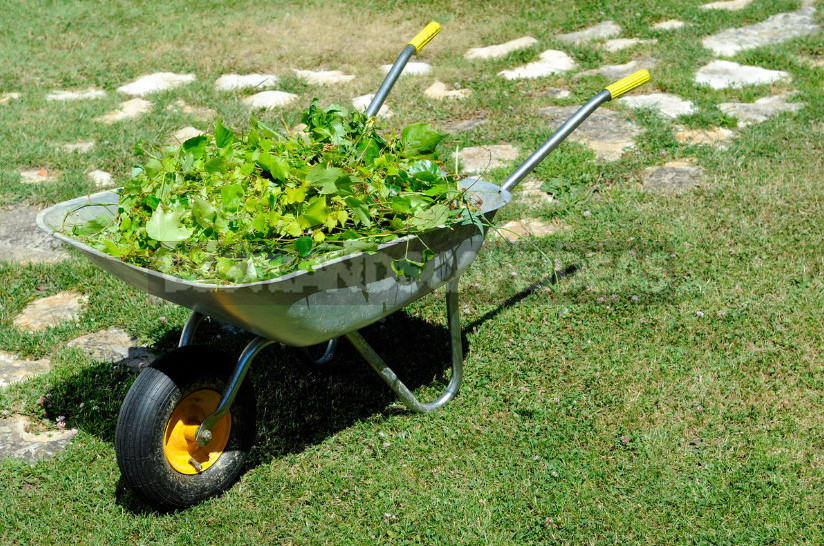
An important point: for mulching, you need to use grass without seeds, otherwise a new “brush” of wild vegetation will soon appear on the beds.
2. Hay
There’s plenty of room for weeds in my garden, and they regularly replenish their mulch. But my neighbors – a couple of pensioners permanently living in the country, from the excess of free time planted every piece of their land with cultivated plants. From this with weeds they have “tension” and therefore the head of the family regularly goes to the meadow and prepares for mulching a pile of hay, and his wife lovingly lays out this stuff in the aisles of vegetables, under berry bushes and ornamental plants.
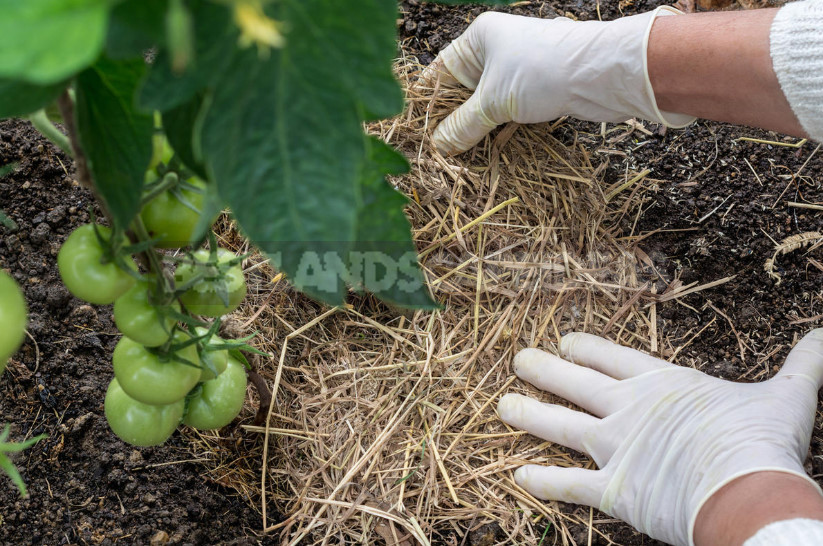
3. Straw
The villagers, the surrounding expanses of which are often occupied by extensive fields with cereals, have a great opportunity to get hold of straw. This organic mulch copes with its task and has another valuable advantage – when decay contributes to the reproduction of the hay Bacillus in the soil. This microorganism suppresses pathogenic microflora and protects cultural plantations from fungal infections.
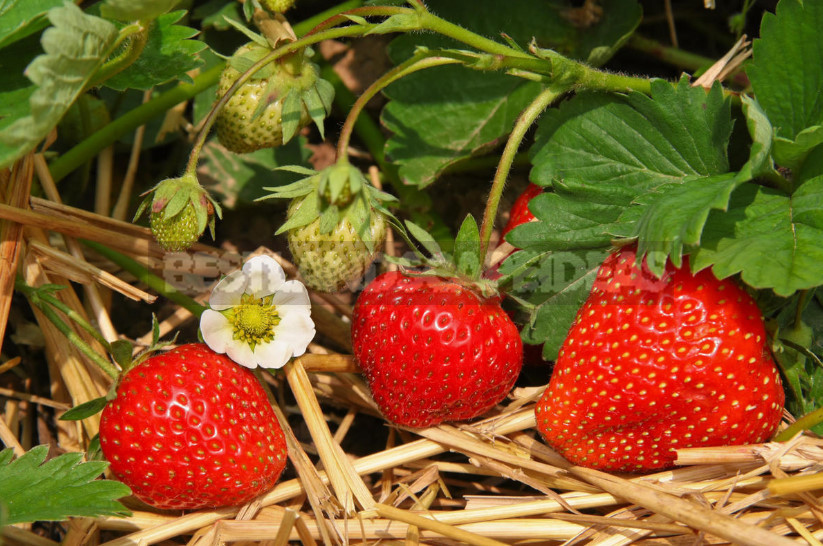
4. Lawn grass
Today, every second cottager on the site has a lawn that requires regular mowing. After each such procedure, a bunch of mown grass is collected – why should it disappear? That’s right, it can be used for mulching beds.

There is one subtlety: the lawn grass must be pre-dried, otherwise the fresh green mass after watering will turn into an airtight layer and undermine the health of the vegetables and flowers growing in the garden.
5. Sawdust
Some savvy gardeners have found a “gold mine” in sawmills, where they stock up on sawdust for mulching their beds. Most often, the owners of woodworking enterprises give such wood waste for free – if only someone came and took out this garbage from the territory.
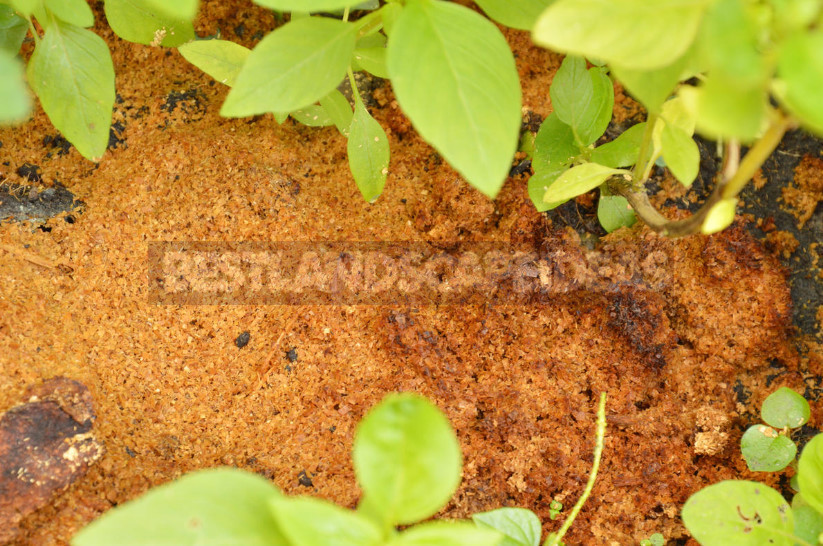
If you have nearby is such a great place, don’t forget that mulch with fresh sawdust has flaws – pull nitrogen from the soil and the rotting of its highly acidic. Fresh sawdust will either need to be left alone for a couple of years and wait for them to rot, or before using a solution of urea (3 buckets of raw materials will need a solution of 10 liters of water and 200 g of urea), and the soil on the site is additionally produced.
6. Chips and chips
These same properties of fresh wood shavings and wood chips and larger wood waste. But in a partially rotted form, this organic material is the best suited for mulching. It in comparison with sawdust rots much longer therefore it is required to update it much less often. Such mulch covers the soil with a dense layer, but at the same time it perfectly passes air and is not compressed as a small wood fraction.
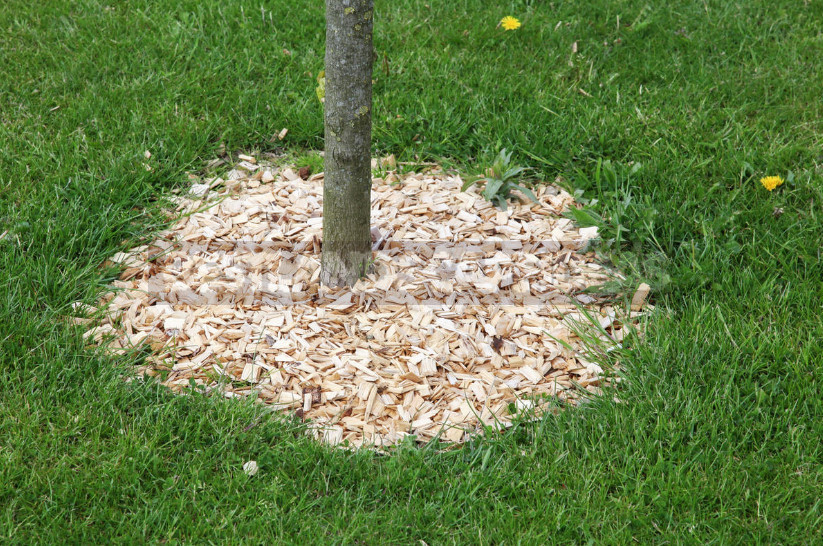
Some craftsmen got used to pre-paint the crushed chips in bright colors — this mulch looks incredibly impressive.
7. Bark
Another option for the “wood” mulch – shredded tree bark. The loss of such material during rotting is only 15% per year from the initial volume, so it can be called the most durable of all types of organic mulch.
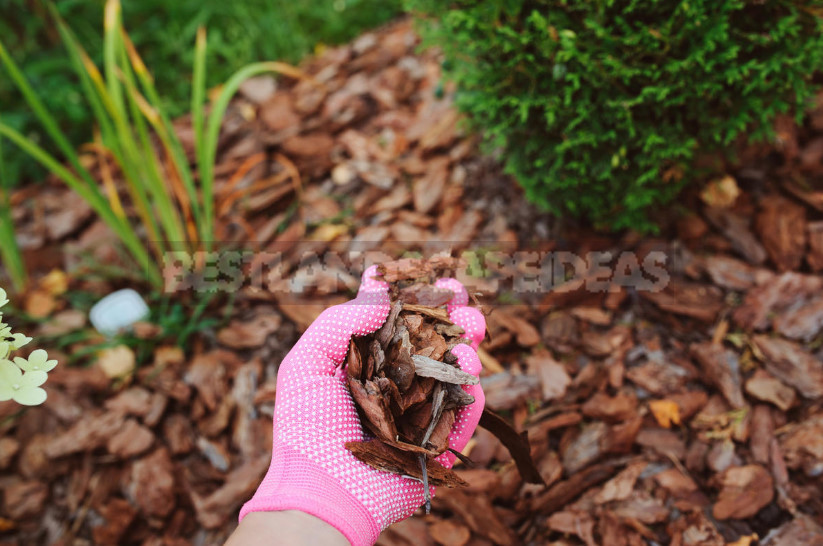
For mulching vegetable beds bark is not suitable, as the soil in the garden requires regular digging, but for perennial plantations will have just right. If you get such a beautiful and durable material nowhere, you can buy it. The sale is offered mainly pine and larch bark, it is of different fractions and is Packed in bags of different volumes.
8. Fallen leaves
In the autumn at our disposal is a pile of fallen leaves, which some gardeners successfully used for mulching beds with winter crops, or stock up on dry leaves for future use, and the next spring lay them in the aisles of vegetable plantations.
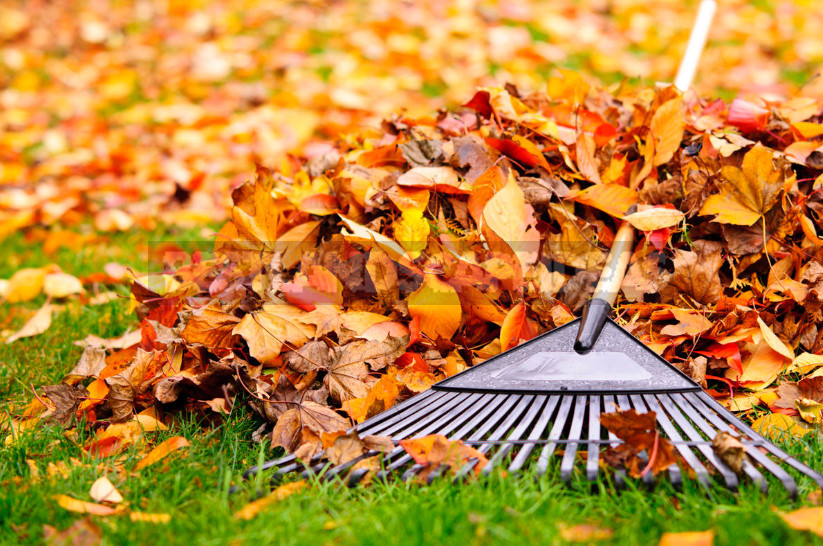
If you decide to follow their example, keep in mind that for mulching you should take the foliage only from under healthy garden plantations. Going into the forest for deciduous litter, avoid oak, willow and aspen — the leaves of these trees contain a lot of tannins and can damage cultivated plants. Owners of areas with acidic soils should use the foliage with caution, because this material when rotting acidifies the soil.
9. The pine needles
Reduces the pH of the soil and coniferous litter, located near the pine forest.
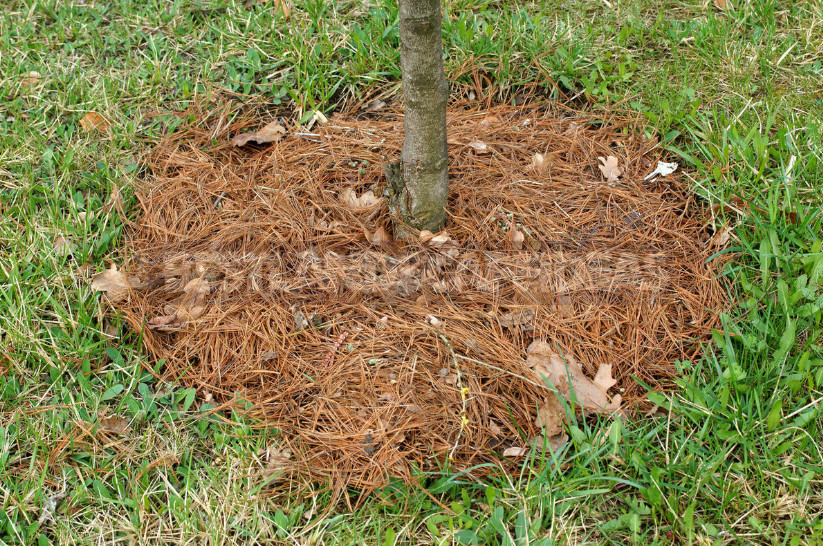
This mulch is durable, perfectly retains moisture in the soil after watering and prevents the growth of weeds. This material will be an excellent choice for perennial plants that prefer acidic soil.
10. Cones
If you spend more free time and instead of coniferous litter gather up in the forest of pine or fir cones, you can transform your suburban area beyond recognition. Such a durable mulching material, spread out in a dense layer in tree trunks, shrubs and perennial flowers, will look incredibly impressive.
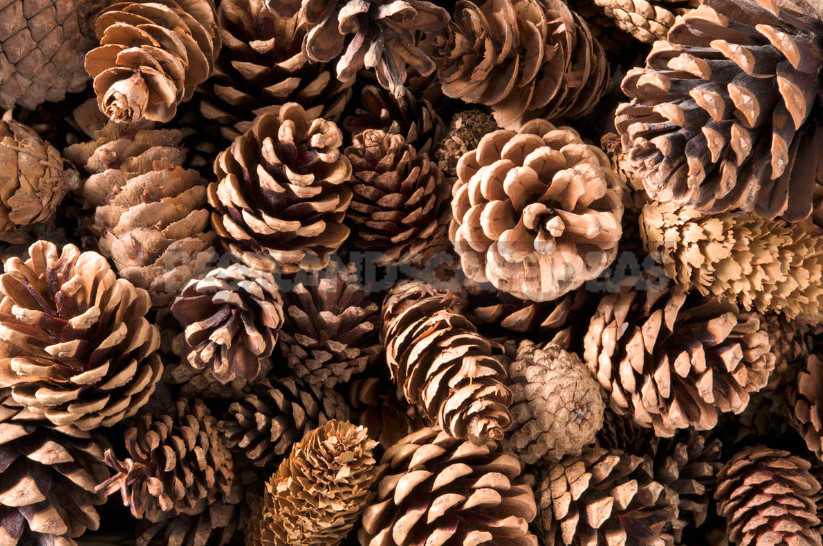
The complete rotting of cones will take many years, so the trouble of collecting such decorative mulch will pay off with a vengeance: plants in the summer will be protected from drought, and in winter – from frost.
11. Humus and compost
Quite often gardeners for mulching beds use humus and compost. Such an organic material has excellent thermal insulation properties, so neither overheating nor overcooling cultural plantings are not terrible. Soil under a layer of mulch will not suffer from weathering and drying.
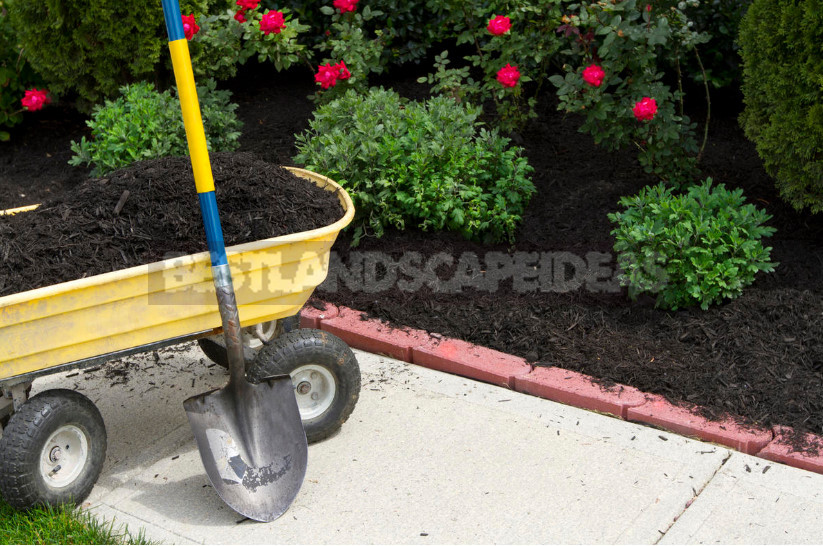
Humus and compost – a favorite treat of earthworms, so this organic matter will be processed by them in the first place, and its layer will need to be updated much more often.
12. Peat
Not far behind in its popularity from other organic materials and peat mulch from this natural product is excellent. Due to its porous structure peat effectively retains moisture in the soil and allows the gardener to reduce the amount of watering, as well as reliably protects the root system of plants from temperature changes.
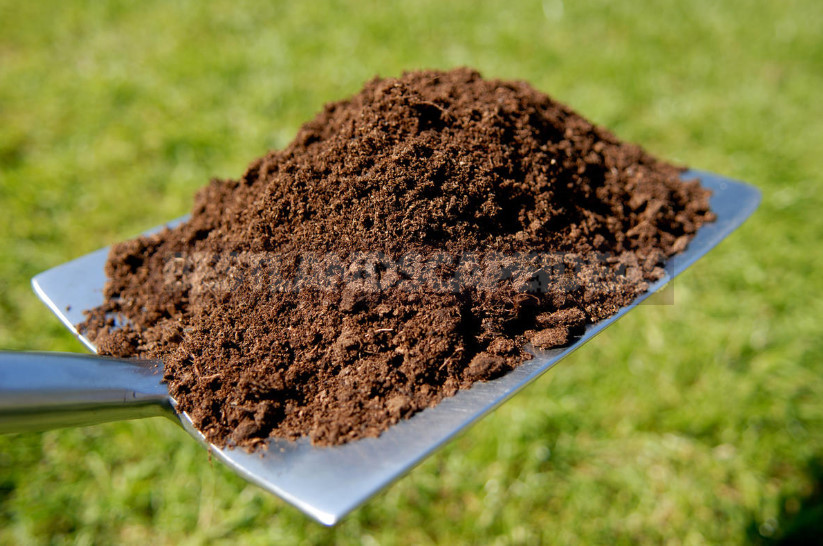
13. Newspapers
Some savvy gardeners have adapted for mulching, even waste paper – Newspapers and magazines that have long been read and are gathering dust in the attic unnecessarily. The printing ink, which gets into the soil after the mulch rotting, raises doubts about the environmental friendliness of this approach. And the durability of paper products leaves much to be desired: the soil in the beds should be covered with Newspapers in several layers, so that they can last until the end of the season. However, not to mention this life hack is impossible.
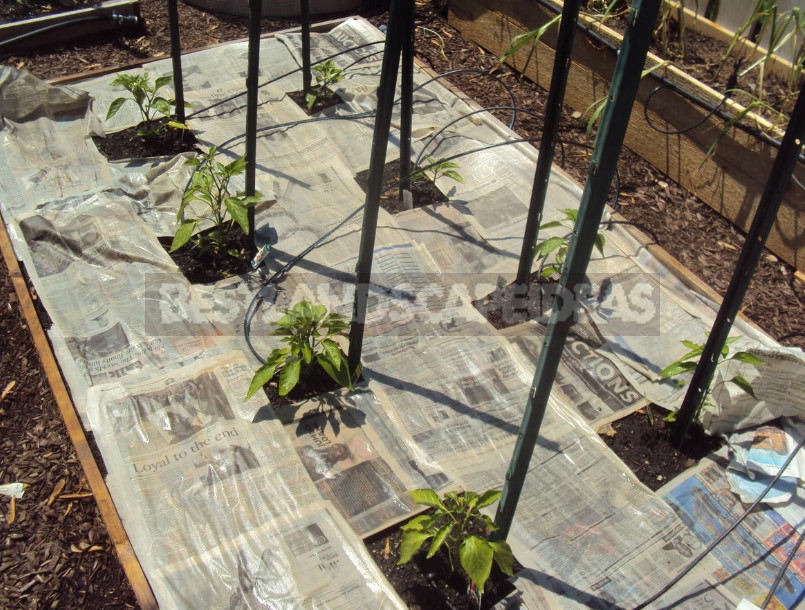
14. Cardboard
Much more recognition from gardeners deserved cardboard: some of them specially collect ownerless boxes on city streets and take away this good to the country. This original mulch denser and more reliable, but it is the end of the season is always “limp” from moisture and needs to be updated. Cover the beds with “fresh” cardboard is quite uncomfortable, so this material is better suited for covering garden paths: cardboard mulch silences weeds and leaves shoes clean even in rainy weather.

Organic mulch is striking in its diversity. Therefore, deciding to facilitate their work in the suburban area, you will certainly be able to choose a suitable option, depending on what is at hand. And the plants that you will enjoy such a foot feather, will certainly thank you for your care with lush flowering and abundant fruiting.
Dear readers, and you mulch beds on the site? What materials do you choose for this purpose? Tell us in the comments about your experience of using this or that type of organic mulch – its advantages and disadvantages.

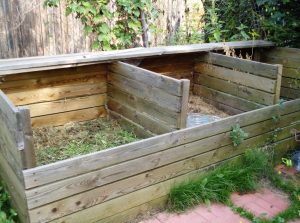
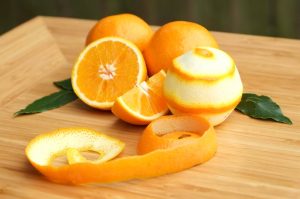

Leave a Reply